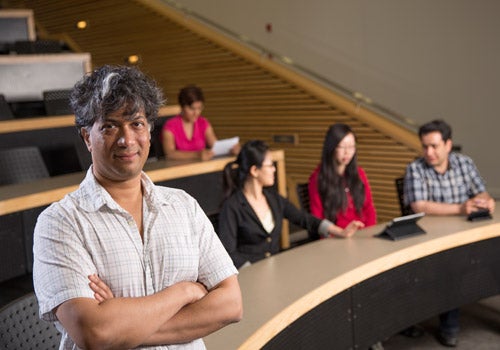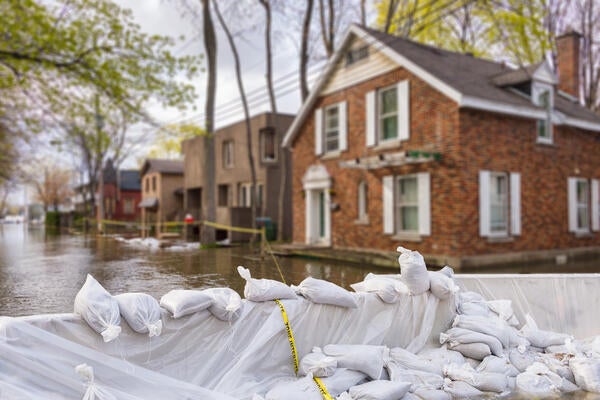
Marijuana taxes should remain low to compete with street value
Waterloo economics professor says Canada’s priority should be public health and shutting down marijuana black market

Waterloo economics professor says Canada’s priority should be public health and shutting down marijuana black market
By Claire Prime Faculty of Arts
Anindya Sen, professor of Economics at the University of Waterloo
As governments begin to draft policies for the legal production, distribution and possession of marijuana in Canada, a University of Waterloo economist is warning that public health — not tax revenue — should be the first priority.
“Our governments’ priority should be the protection of public health and the elimination of existing and future black markets. Other concerns, such as raising as much provincial and federal tax revenue as possible, should be secondary,” says Anindya Sen, a professor of economics who provided recommendations to the Liberal government in a report published by the C.D. Howe Institute.
Most of Sen’s suggestions match those of the federal Task Force on Cannabis Legalization and Regulation, and the legislation recently tabled by the Liberal government.
Sen, director of Waterloo’s Master of Public Service program, says while legalization of marijuana could generate hundreds of millions of dollars in tax revenue, the focus on impaired driving and health effects, especially for youth, should be ahead of other concerns like how the new laws would free up the justice system.
He advises governments to eliminate the existing and future underground market by keeping taxes low so prices remain at or near their current street value. In Colorado, taxes have reached nearly 30 per cent and illegal producers are making up for the demand for cheaper pot, he says.
In Canada, high taxes have fuelled sales of contraband cigarettes. “Our governments should learn from the experience of regulating tobacco, which has a thriving black market, so that they avoid a repeat of this experience,” says Sen.
As it stands, the new legislation puts Ottawa in charge of licensing producers and monitoring safety and the provinces in charge of distribution. It also sets stiff penalties for dealers targeting minors and those who drive high.
Sen points out that many important decisions must still be made: provinces must pick a legal age of at least 18 and decide where the drug will be sold, whether in liquor stores, designated shops or pharmacies. Decisions must also be made around pricing, taxation, packaging and marketing, and public education programs.
Similarly, Sen advises governments not to constrain producers and instead focus on safe and hygienic growing and handling. Taxes should not be raised until the industry has matured. Suppliers need flexibility as the market grows and stabilizes so they can turn a profit and have incentive to maintain consistent supply, he says.
While the Canadian Medical Association recommends a legal age of 21 to curb harm to developing brains, raising the age above the legal drinking age may again fuel the black market, says Sen. “A better policy option would be to allow access to a legal supply, which meets regulatory standards and increases the likelihood of gaining advice on proper handling and consumption practices.”
In writing his recommendations, Sen looked to Colorado and Washington states for insight into what Canadian policies could look like. For some policies, however, Canada must venture into unchartered waters.
“We’re going to be the second country to legalize marijuana production, distribution and consumption, after Uruguay,” he says. “The world will be looking at us and our model to see how it works.”

Read more
Meet five exceptional Waterloo graduate students crossing the convocation stage as Class of 2025 valedictorians

Read more
Waterloo researchers propose solution to help communities escape the costly cycle of flood damage and rebuilding

Read more
Co-op for Social Good helps both students and community organizations thrive
The University of Waterloo acknowledges that much of our work takes place on the traditional territory of the Neutral, Anishinaabeg, and Haudenosaunee peoples. Our main campus is situated on the Haldimand Tract, the land granted to the Six Nations that includes six miles on each side of the Grand River. Our active work toward reconciliation takes place across our campuses through research, learning, teaching, and community building, and is co-ordinated within the Office of Indigenous Relations.